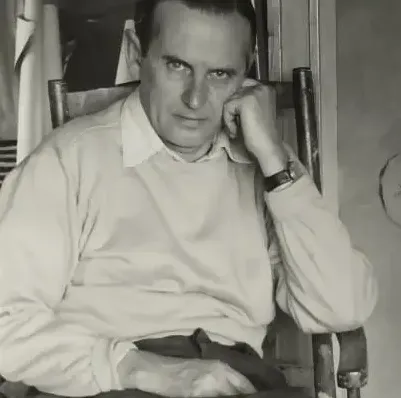
Graham Sutherland
Graham Sutherland, a prominent 20th-century British artist, was celebrated for his prints and paintings.
Biography of Graham Sutherland
Born in Streatham, London, Graham Sutherland attended Homefield Preparatory School in Sutton and continued his education at Epsom College, Surrey. After a year of engineering apprenticeship at the Midland Railway works in Derby, he persuaded his father that engineering was not his true calling, but the art was. In 1921, he enrolled at the prestigious Goldsmiths' School of Art, specializing in engraving and etching.
During World War II, he served as an official war artist, incorporating an awareness of violence into his passionate portrayal of landscapes, which resulted in memorable yet unsettling paintings. After the war, he found inspiration on the French Riviera and spent several months there annually until the 1960s.
Despite his conversion to Catholicism in 1926 and his deep involvement in religion from 1950 until his death, he continued to create works rooted in natural forms and occasionally merged them with religious symbolism.
In addition to his landscapes, the artist was also famous for his portraits. In 1954, at the height of his fame, Sutherland received a commission to create a full-length portrait of Winston Churchill. The portrait was intended to be unveiled as part of Churchill's 80th birthday ceremony at Westminster Hall. Meticulously, Sutherland worked on this project, creating numerous charcoal sketches of the Prime Minister during several sittings in August 1954. His focus was particularly on capturing Churchill's face and hands before transitioning to oil studies. He also drew inspiration from photographs taken by Elsbeth Juda.
However, Churchill had suffered a stroke and was in the process of recovery, a fact concealed from the public. Sutherland made a bold choice to depict the truth rather than idealize the subject, resulting in a striking departure from the idealized photograph taken by Yousuf Karsh during the war. The final result indeed represented a bold statement of truth, portraying an older, somewhat grumpy Churchill, devoid of the humor and verbal creativity often associated with the legendary figure. The painting had a dark and rough quality as if Churchill were emerging from the ruins of a shattered Europe. Both Churchill and his wife, Clementine, were unhappy with the portrait and initially wanted it to remain concealed during the ceremony.
Since the project had been funded by donations from members of the House of Commons and the House of Lords, Churchill eventually allowed the presentation to proceed. Reactions to the portrait were divided, with some marveling at its likeness while others condemned it as disgraceful. Instead of being displayed in the Houses of Parliament after Churchill's death, the painting was given to him as a gift and eventually ended up at Chartwell. Reportedly, Clementine Churchill destroyed it within a year of its arrival.
Major retrospective exhibitions of Sutherland's work took place at notable venues, including the Institute of Contemporary Arts in 1951, the Tate in 1982, the Musée Picasso in Antibes, France, in 1998, and the Dulwich Picture Gallery in 2005. Additionally, an exhibition of rarely seen works on paper by Sutherland was presented in Oxford from 2011 to 2012.
Sutherland died in 1980. He was laid to rest in the Church of St Peter and St Paul graveyard in Trottiscliffe, Kent.
Graham Sutherland's Art Style
Sutherland's artistic journey underwent notable shifts in direction. Initially specializing in engraving and etching, he gained recognition as a printmaker. His early pastoral prints showcased the influence of the English Romantic artist Samuel Palmer, foreshadowing Sutherland's later involvement in the Neo-Romantic movement in Britain. However, the famous 1929 Wall Street Crash resulted in the bankruptcy of many of his collectors, prompting Sutherland to explore alternative sources of income. He worked as an illustrator until a visit to Pembrokeshire completely captivated him, leading to his embrace of painting as his primary medium for self-expression.
Throughout his life, Sutherland drew continuous inspiration from the Pembrokeshire countryside and its captivating anthropomorphic natural forms. When creating landscapes, Sutherland's approach involved focusing on intricate details such as dead trees, boulders, and thorn bushes—elements that, according to the artist, warranted individual attention. Sutherland adopted the method of sketching a scene on-site and then developing it into a studio painting. Although this approach was not novel, it was evident that his studio work deviated significantly from what he observed outdoors. His style was rooted in Neo-Romanticism and inspired other notable artists, including Paul Nash, John Craxton, and John Piper.
Over time, Sutherland revealed himself as a vibrant colorist with a distinctive sense of harmonies. He gradually departed from the dark and heavy tones he had previously employed, retaining the sharp black-and-white contrasts while incorporating vibrant hues such as acid pinks, mauves, orange, light blue, emerald, chrome yellow, and scarlet.
Years:
Born in 1903
Country:
United Kingdom, Streatham, London
Gallery: